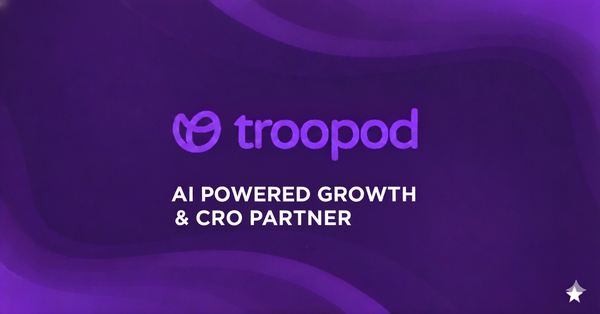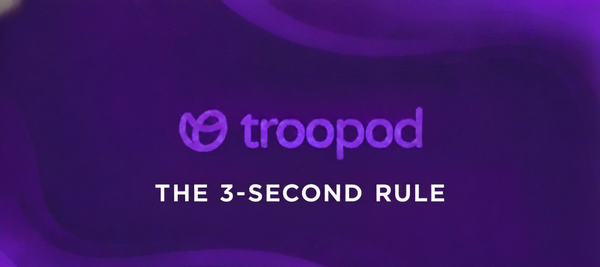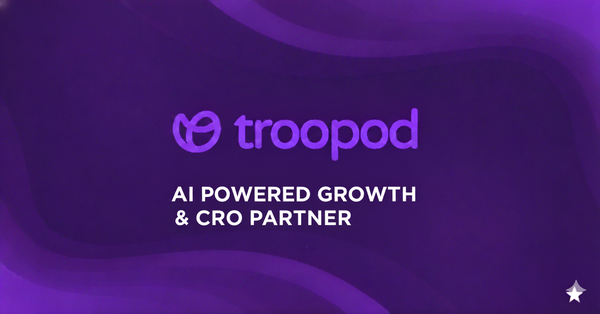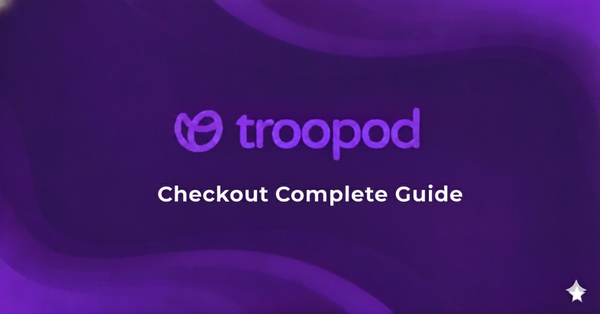Why Your Website Visitors Are Leaving (And How AI Personalization Can Make Them Stay)
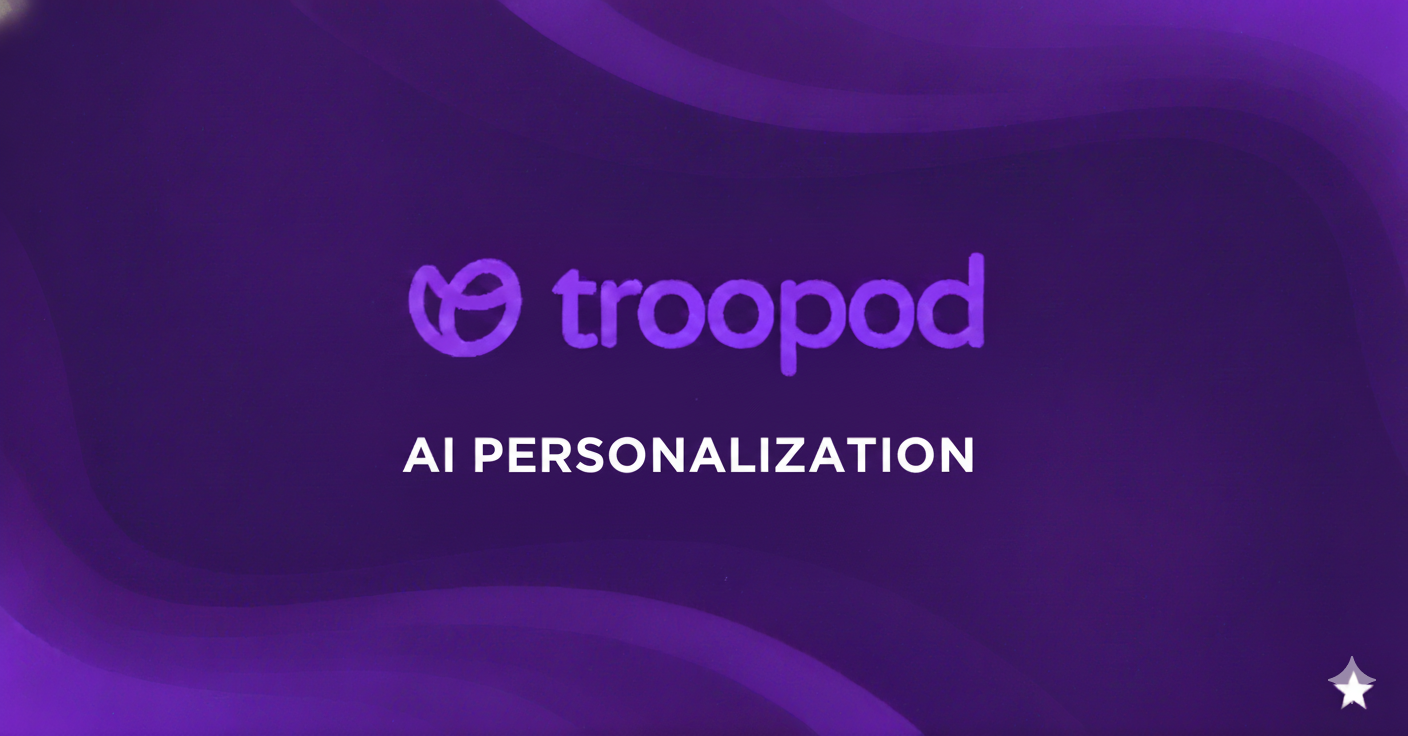
You've done everything right. Your website looks professional. Your product is solid. Your marketing is driving traffic. But here's the brutal truth that keeps e-commerce founders up at night: 96% of your website visitors leave without buying anything.
That's not a typo. On average, only 2-4% of website visitors actually convert. The other 96%? They're bouncing to your competitors, abandoning their carts, or simply losing interest within seconds of landing on your page.
The question isn't whether you have a problem. The question is: are you solving it with 2020's tools or 2025's intelligence?
The Real Reason Visitors Leave (It's Not What You Think)
Most businesses blame the usual suspects—high prices, complicated checkout, slow load times. But after analyzing millions of user sessions, the real culprit is something far more fundamental: your website treats everyone the same.
Think about the last time you walked into a physical store. The salesperson didn't greet every customer with the exact same script, show them the exact same products, or ignore their body language when they seemed confused or interested. Yet that's precisely what most websites do.
Consider these three visitors landing on your homepage right now:
Visitor A: A 28-year-old returning customer from Mumbai, browsing on mobile during lunch break, previously purchased budget items, high price sensitivity
Visitor B: A 45-year-old first-time visitor from Bangalore, browsing on desktop from office, looking at premium products, researching for 20 minutes
Visitor C: A 35-year-old cart abandoner from Delhi, third visit this week, added items but didn't checkout, comparing your prices with competitors
Your current website? It shows all three people the exact same homepage, the same product recommendations, the same generic "Welcome" message.
And you wonder why they leave.
The 2025 Conversion Reality Check
Let's talk numbers, because that's what actually matters to your bottom line.
The average e-commerce conversion rate in India hovers around 2.5%. If you're getting 10,000 monthly visitors, that's just 250 conversions. At an average order value of ₹2,000, you're looking at ₹5 lakh in monthly revenue.
Now here's where it gets interesting.
Companies implementing AI-driven real-time personalization are seeing conversion rate increases of 30-50% on average, with top performers hitting 300% improvements in ROI. Let's be conservative and say you only achieve a 30% lift.
That same 10,000 monthly visitors now converts at 3.25%. That's 325 conversions. At ₹2,000 AOV, you're at ₹6.5 lakhs monthly revenue. That's an extra ₹1.5 lakhs per month, or ₹18 lakhs annually—from the same traffic you're already paying for.
But here's what really keeps traditional marketers up at night: 76% of consumers now expect personalized experiences, and 71% feel frustrated when websites don't deliver them.
Translation? If you're not personalizing, you're not just leaving money on the table. You're actively annoying your customers.
Why Traditional A/B Testing Can't Save You Anymore
"But we already do A/B testing!" you might say.
Great. How long does a typical test take you? Two weeks? A month? And how many variations can you realistically test at once? Five? Ten?
Here's the math that breaks traditional A/B testing:
A typical D2C brand has:
- 8-12 major customer segments
- 15-20 different traffic sources
- 5-8 device types
- 10+ product categories
- Multiple stages of the buying journey
That's literally thousands of possible combinations. To test them all using traditional methods would take years and require a team of data scientists.
Meanwhile, an AI personalization platform processes all these variables simultaneously, learns from every single visitor interaction, and optimizes in real-time—no waiting for statistical significance, no manual test setup, no analysis paralysis.
The Five Costly Mistakes Keeping Your Conversion Rates Low
Mistake 1: Showing First-Time Visitors and Loyal Customers the Same Experience
Your loyal customer who's made five purchases doesn't need to see "What is [Your Brand]?" and trust badges. They need quick access to new arrivals, personalized recommendations based on their purchase history, and maybe an exclusive loyalty offer.
Meanwhile, your first-time visitor needs social proof, clear value propositions, and education about what makes you different.
Same website. Completely different needs. One-size-fits-all approach fails both.
Mistake 2: Ignoring Mobile-Specific Behavior
Mobile users aren't just "desktop users on smaller screens." They have different intent, different patience levels, and different conversion triggers.
Mobile users are typically:
- More price-sensitive (easier to comparison shop)
- More impatient (will bounce in 3 seconds if confused)
- More likely to browse and buy later
- More influenced by social proof and reviews
Your desktop-optimized experience isn't just "not optimal" for mobile—it's actively working against conversion.
Mistake 3: Generic Product Recommendations That Miss the Mark
"Customers who bought this also bought that" is the laziest form of personalization, and customers see right through it.
Real personalization considers:
- What they're browsing right now (real-time intent)
- What they've purchased before (historical preference)
- What similar customers are buying (collaborative filtering)
- Current inventory levels (business logic)
- Seasonal trends (contextual relevance)
- Price sensitivity (behavioral signals)
When Amazon shows you a recommendation, it's processing over 100 variables. Are you?
Mistake 4: Cart Abandonment Emails That Come Too Late
The average cart abandonment email goes out 2-24 hours after someone leaves their cart.
Here's what actually happens: within 15 minutes of abandoning a cart, 63% of users have already visited a competitor's site. Within an hour, 87% have moved on to other activities.
Real-time personalization intervenes the moment someone shows abandonment signals—before they've even left your site. Exit-intent offers, personalized discounts, solving objections in real-time.
Mistake 5: Running Static Campaigns in a Dynamic Market
You spent two weeks planning a campaign. You launched it. You're running it for a month to "gather enough data."
Meanwhile, in the real world:
- Competitor prices changed three times
- A trending social media post shifted customer preferences
- Inventory levels fluctuated
- Weather patterns affected buying behavior
- A new customer segment emerged from an unexpected traffic source
Static campaigns can't adapt to dynamic markets. AI-powered systems can.
What AI Personalization Actually Looks Like in Action
Let's get specific. Here's what happens when a visitor lands on a website powered by AI personalization:
Millisecond 0-50: AI analyzes 200+ signals including device type, location, traffic source, time of day, browsing behavior, historical data (if returning visitor), and current session interactions.
Millisecond 50-100: Decision engine determines optimal experience including which hero banner to show, which products to feature, what messaging resonates with this specific visitor, and what offers (if any) to present.
Millisecond 100-200: Personalized content loads seamlessly. The visitor sees a website that feels tailor-made for them.
Throughout Session: AI continues learning and adapting. Visitor lingers on a product? Surface complementary items. Shows price sensitivity? Highlight value and payment options. Seems confused? Simplify navigation and provide clear CTAs.
This isn't future technology. This is happening right now on the websites that are eating your market share.
The Business Case That Writes Itself
Still thinking "sounds nice, but is it worth it?" Let's do the actual math for a mid-sized D2C brand:
Current State:
- Monthly visitors: 50,000
- Conversion rate: 2.5%
- Conversions: 1,250
- Average order value: ₹2,500
- Monthly revenue: ₹31.25 lakhs
With AI Personalization (Conservative 35% lift):
- Monthly visitors: 50,000 (same traffic)
- Conversion rate: 3.375%
- Conversions: 1,688
- Average order value: ₹2,750 (slight AOV increase from better recommendations)
- Monthly revenue: ₹46.42 lakhs
Additional monthly revenue: ₹15.17 lakhs Additional annual revenue: ₹1.82 crores
And remember—this is conservative. Top performers see 50%+ improvements.
Curious what your specific numbers could look like? Let's run them together →
Why 2025 is the Year Traditional CRO Teams Can't Compete
Here's an uncomfortable truth for businesses still relying on traditional CRO approaches:
Traditional CRO Team Annual Cost:
- 2-3 CRO specialists: ₹28-42L
- Designers: ₹12-18L
- Developers: ₹15-24L
- Tools and software: ₹6-8L
- Total: ₹61-92L annually
AI CRO Platform Annual Cost:
- Platform subscription: ₹8-15L
- 1 strategy consultant: ₹18-24L
- Total: ₹26-39L annually
That's a 58-73% cost reduction. But here's the kicker: the AI platform delivers 3-8x better results because it can:
- Run hundreds of experiments simultaneously
- Learn from every single visitor interaction
- Operate 24/7 without fatigue
- Process complexity that humans simply can't
- Optimize at speeds humans can't match
This isn't about replacing human creativity and strategy. It's about augmenting human intelligence with machine precision.
The Privacy-First Approach That Actually Builds Trust
"But wait," you might be thinking, "isn't all this personalization creepy?"
It can be—if done wrong. But privacy-first personalization actually increases customer trust and engagement.
Here's how modern AI personalization respects privacy while delivering results:
Transparent Data Usage: Customers understand what data you're collecting and why. "We remember your size preferences to make shopping easier" is clear value exchange.
User Control: Granular privacy settings let customers control their personalization intensity. Want maximum personalization? Opt in. Prefer minimal data collection? That works too.
On-Device Processing: Advanced systems process sensitive data locally on user devices, never sending personal information to central servers.
Anonymized Learning: AI models learn from aggregate patterns without storing individual user data unnecessarily.
When customers understand the value they're getting in exchange for data, 78% actively prefer personalized experiences. The key is building that trust through transparency, not deception.
What Happens If You Wait Another Year?
Let's be honest about what's at stake.
Your competitors who implement AI personalization in 2025 will:
- Convert 30-50% more of the same traffic
- Build deeper customer relationships through relevance
- Reduce customer acquisition costs by getting more from existing traffic
- Create compound advantages that grow over time
- Set customer experience expectations you'll struggle to match
Meanwhile, businesses sticking with traditional approaches will:
- Watch conversion rates stagnate or decline
- Spend more on paid acquisition to compensate
- Lose market share to more relevant experiences
- Face increasing customer frustration with generic experiences
- Fall further behind as competitors pull ahead
This isn't fear-mongering. It's mathematics. In a competitive market, the company that converts 3.5% of traffic while you convert 2.5% will dominate—even if you have better products or larger marketing budgets.
Real Results from Real Companies
Fashion E-Commerce Brand (Mumbai)
- Traffic: 80,000 monthly visitors
- Challenge: 2.1% conversion rate, high cart abandonment
- Solution: Implemented AI personalization for product recommendations and dynamic content
- Results: 43% increase in conversion rate, ₹18L additional monthly revenue
Home Decor Marketplace (Bangalore)
- Traffic: 120,000 monthly visitors
- Challenge: Low engagement from mobile users, one-size-fits-all experience
- Solution: AI-powered mobile-specific personalization and real-time intent detection
- Results: 67% improvement in mobile conversion rate, 38% increase in average order value
Electronics Retailer (Delhi NCR)
- Traffic: 200,000 monthly visitors
- Challenge: High product variety making recommendations difficult, long sales cycles
- Solution: Predictive personalization for complex product categories
- Results: 52% conversion rate increase, 28% reduction in customer acquisition cost
These aren't outliers. These are typical results when AI personalization is implemented correctly.
The Implementation Reality: Easier Than You Think
One of the biggest misconceptions about AI personalization is that it requires months of implementation and a team of data scientists.
The reality in 2025? Modern platforms can be up and running in days, not months.
Week 1: Foundation
- Install tracking code (similar complexity to Google Analytics)
- Connect data sources (website, CRM, email platform)
- Configure privacy and consent settings
- Begin data collection
Week 2-3: Intelligence
- AI models begin learning from visitor behavior
- Initial personalization rules activate
- A/B tests launch automatically
- Performance monitoring begins
Week 4+: Optimization
- AI continuously improves from real visitor data
- Automatic testing and implementation of new strategies
- Monthly strategy reviews and refinement
- Compound improvements over time
No massive technical team required. No months of planning. No disruption to existing operations.
See exactly how implementation would work for your site →
Your Action Plan: From Generic to Genius in 90 Days
Ready to stop watching 96% of your visitors walk away? Here's your roadmap:
Days 1-7: Assessment
- Audit current conversion rates across segments
- Identify highest-impact personalization opportunities
- Review privacy compliance and consent infrastructure
- Define success metrics and benchmarks
Days 8-30: Foundation
- Implement AI personalization platform
- Set up data collection and integration
- Configure privacy-first data handling
- Launch initial personalization features
Days 31-60: Acceleration
- AI models learn from live traffic
- Automatic testing and optimization begin
- Monitor early performance indicators
- Refine strategies based on initial insights
Days 61-90: Optimization
- Scale successful personalization approaches
- Expand to additional customer segments
- Integrate cross-channel experiences
- Calculate ROI and plan next phases
Beyond Day 90: Continuous Improvement
The beauty of AI personalization is that it gets smarter over time. Your Day 90 performance becomes your new baseline, with continuous improvements compounding month after month.
The Bottom Line: Personalize or Perish
The era of generic websites is over. Customer expectations have permanently shifted.
In 2025, visitors expect websites to:
- Remember their preferences
- Understand their intent
- Show relevant products
- Respect their time
- Adapt to their behavior
- Protect their privacy
Companies that deliver on these expectations are winning. Companies that don't are losing market share to competitors who do.
The technology exists. The business case is proven. The customer expectations are clear.
The only question is: will you lead this shift or react to it after your competitors have already captured market share?
Start Your Personalization Journey Today
Every day you wait is another day of lost conversions, frustrated visitors, and missed revenue opportunities.
But here's the good news: getting started is easier than you think. And the results come faster than you'd expect.
See exactly how AI personalization could transform your website's performance with a personalized demo tailored to your specific business, traffic, and goals.
Book Your Personalized Demo Now →
No generic sales pitch. No one-size-fits-all presentation. Just a real analysis of your website's potential and a clear roadmap to get there.
Your visitors are ready for personalized experiences. The question is: is your website ready to deliver them?
About Troopod: We help D2C brands and e-commerce businesses transform website visitors into customers through AI-powered real-time personalization. Our platform delivers measurable conversion improvements while respecting customer privacy and requiring minimal technical overhead.
Ready to 3x your conversion rates? Start your personalization journey today →


